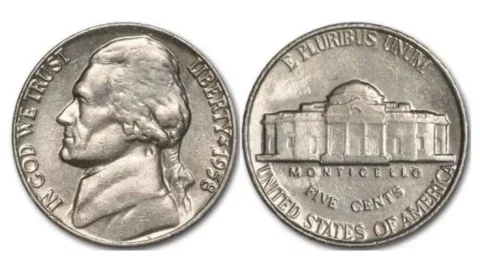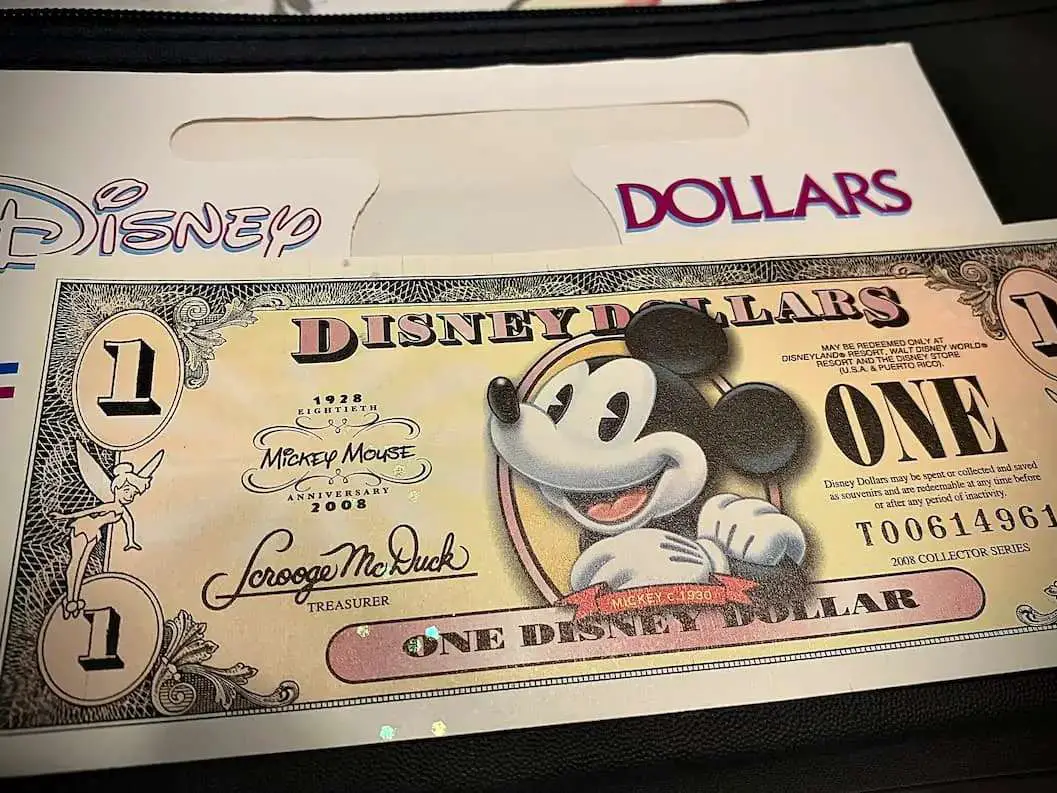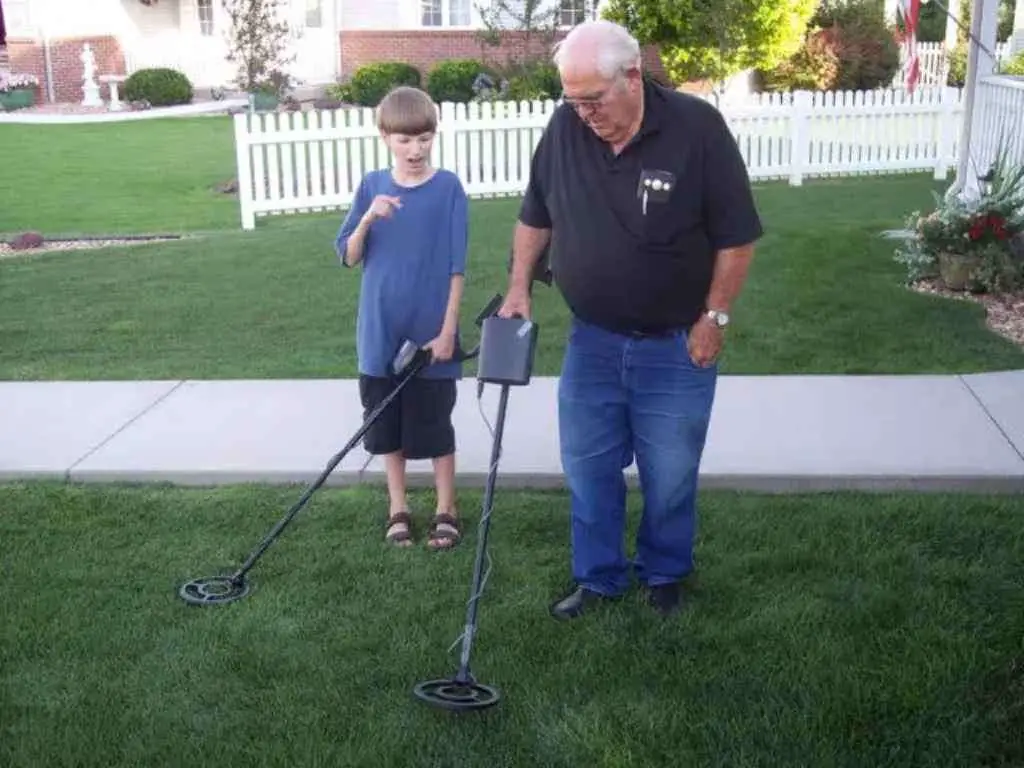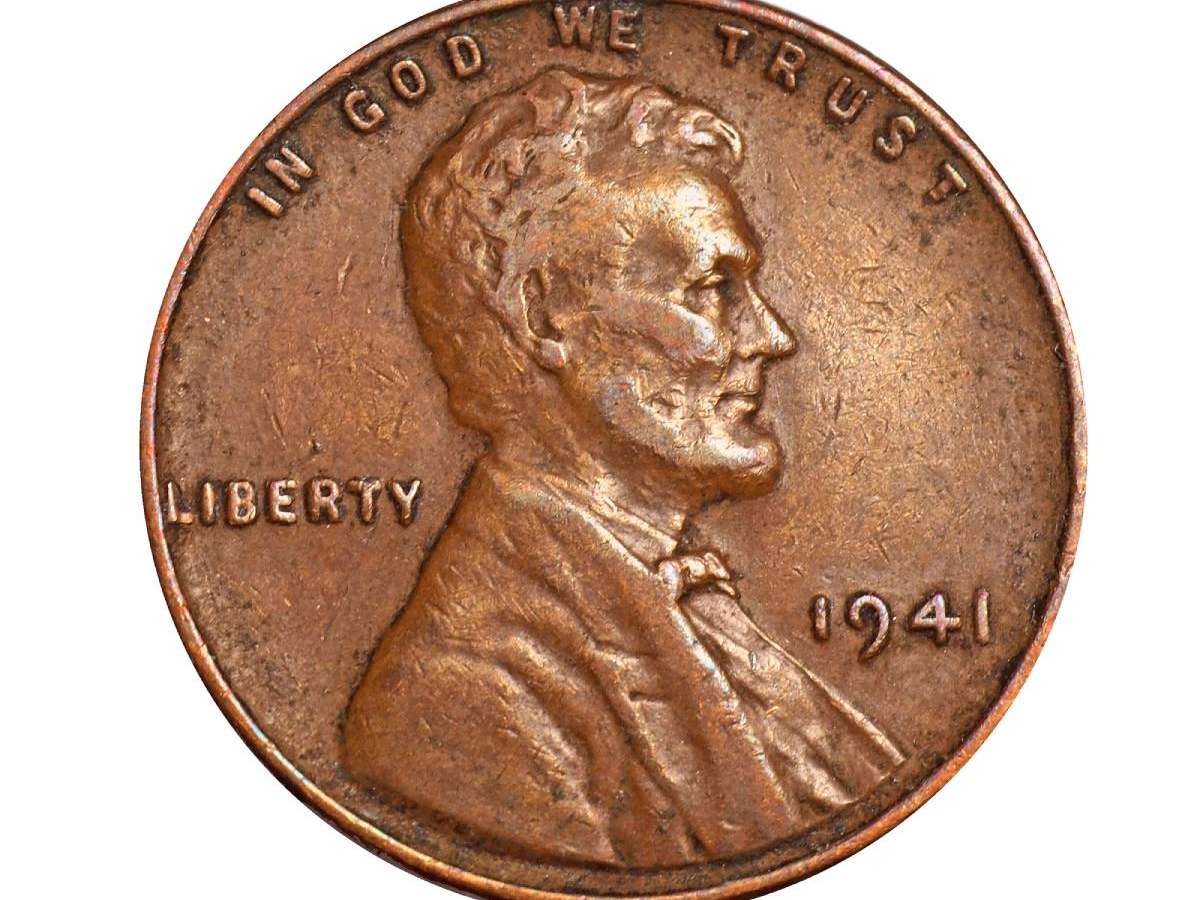
Yes, your 1958 nickels are worth more than face value! But just how much more?
Some 1958 nickels are rare and valuable, while others are worth only a few cents more than face value.
So, what’s the real difference between a 1958 nickel that’s worth only 7 cents and one that’s worth more than $13,000?
Today, I’m going to tell you:
- Which details you should be looking for on your 1958 nickels
- How to tell if you have a rare and valuable 1958 nickel
- How much 1958 nickels are worth (circulated vs uncirculated prices)
- Which 1958 error nickels you are most likely to find in spare change
1958 No Mintmark Nickel Value
Of the two circulating nickel issues produced by the United States Mint in 1958, the Philadelphia strikes are the scarcer type. (These don’t carry a mintmark of any kind.) Just 17,088,000 were minted in Philly.
- Circulated 1958 nickels with no mint mark are worth 10 to 20 cents apiece, depending on their individual condition.
- Most uncirculated specimens are worth 50 cents to $1.
- The single-finest specimen known (graded by Professional Coin Grading Service as MS66+ Full Steps) sold for $13,512.50 in a 2019 auction.
1958-D Nickel Value
The 1958-D nickel from the Denver Mint saw a mintage of 168,249,120 pieces. While it may have been struck in far greater numbers than its Philly counterpart, the 1958-D nickel is considered scarce in pocket change today.
- A worn 1958-D nickel is worth 7 to 10 cents.
- Uncirculated 1958-D nickels have a value of about 35 cents to $1.
- The most valuable 1958-D nickel was graded by Professional Coin Grading Service as MS67 Full Steps and sold in 2008 for $6,325.
1958 Proof Nickel Value
The United States Mint struck a limited number of 875,652 special 1958 proof nickels specifically for coin collectors.
These high-quality proofs were made with highly polished blanks and struck by specially prepared dies. Most 1958 proof nickels possess deep, mirror-like surfaces and outstanding detail.
- A typical 1958 proof nickel is worth around $5.
- The nicest one known to exist is graded Proof-68 Deep Cameo by Professional Coin Grading Service and sold for $8,225 in a 2013 auction.
IMPORTANT: What Is The Grade Of Your 1958 Nickel?
To determine the true value of your 1958 Jefferson nickel, you first need to know what condition (or grade) your coin is in.
Grab a coin magnifier and a copy of the U.S. Coin Grading Standards book. Then, watch this video to see how to grade coins yourself at home:
These are the best coin grading apps that make grading coins yourself much easier.
Rare 1958 Nickel Errors To Look For
If you’ve found something unusual with your 1958 nickel and want to know what the oddity may be worth, you’re not alone. Many people find weird-looking coins and want to know what the value is of the coin they believe to contain errors.
The big problem with this that most of the coins that people believe are errors aren’t errors at all…
From coins with thick, flat edges and rims to circular grooves on the middle of the coin, the vast majority of the strange and unusual things people find on coins are simply forms of post-mint damage — everyday bumps, bruises, scratches, dings, and environmental damage.
Then there are the oddities that happen at the mint that aren’t really worthwhile errors. One of these is machine doubling — a very common issue caused by aging dies that roughly resembles the appearance of being a doubled die, but isn’t.
It’s really important to note that true error coins — especially the ones that are worth a lot of money — are truly scarce. You’re not going to be finding them with ease in your spare change. Many collectors needs to rake through thousands upon thousands of coins to find an error coin that’s really worth keeping.
I say all this not to discourage you from looking for valuable error coins but rather to paint a realistic picture of error coin rarities, what they’re worth, and why they’re such a treasure to behold when they’re found.
On that note, let’s look at some of the most frequently encountered 1958 nickel errors and examine what they’re worth…
1958 Doubled Die Nickel Error
Doubled dies are one of the most popular (and often most valuable) kinds of error coins.
And while it’s true that some doubled dies are worth hundreds or even thousands of dollars, there is currently no known 1958 doubled die nickel that is rare or drastic enough in appearance to command such a premium.
Minor doubled dies exist — with evidence of minor doubling in the lettering or design details, such as Jefferson’s eye.
- Most 1958 doubled die nickels are worth $10 to $20 or less.
1958 Off-Center Nickel Error
Come across a 1958 nickel that has a thicker (or wider) rim on one side of the coin versus the other? Or is your coin missing a crescent-shaped portion of the design?
These are all indications that the coin was struck off-center.
Off-center errors are caused either by misaligned dies or the coin itself not being placed between the dies properly.
Most off-center strikes are between 1% and 3% askew and are really not worth any premium due to the commonality of such minor off-center errors. However, off-center coins with strikes beyond 5% (and certainly greater than 10%) can drum up some real values!
- A 1958 nickel that is 10% off center could bring $15 to $20 or more.
- A 1958 nickel that is 50% off-center but still showing a complete date and mintmark (if applicable) can realize $100 to $200.
1958 Die Break / Die Cud Nickel Error
As coin dies age due to normal wear and tear, they can begin developing cracks or fissures — these will transfer onto the struck coin as raised lines and bumps.
Minor die breaks are common and generally carry little premium. But large, more prominent die breaks (as well as those that create strange or unusual additions to the design that is supposed to be on the coin) can claim huge prices.
Values for coins with die breaks vary depending on the magnitude, position, and overall appearance of the die crack on the individual coin.
- Most 1958 nickels with minor to moderate die breaks can take $5 to $20.
- Those with larger die cracks may sell for $50 or more.
- The die cud is the most valuable type of die break. Cuds are large, flattish die breaks attached to the rim of a coin. These often trade for $100 to $150.
1958 Repunched Mintmark Nickel Error
Back in the 1950s, mintmarks were still placed onto the working dies by hand. This means that there were many situations in which the coin’s mint mark was placed in slightly the wrong spot — or even the incorrect position or orientation.
Instead of disposing of a working die that had a minor mintmark mishap, the mint mark would be repunched onto the die.
Repunched mintmarks are fairly common types of varieties, though some are more drastic than others. Repunched mintmarks may show doubling or tripling of the mintmark — or the appearance of an upside-down or sideways mintmark under the final one that’s upright.
- Repunched mintmark varieties on 1958 nickels normally sell for $2 to $5.
- More unusual repunched mintmark errors can retail for $10 to $20 or more.
READ NEXT: A List Of All The Most Valuable U.S. Nickels
I’m the Coin Editor here at TheFunTimesGuide. My love for coins began when I was 11 years old. I primarily collect and study U.S. coins produced during the 20th century.
I’m a member of the American Numismatic Association (ANA) and the Numismatic Literary Guild (NLG) and have won multiple awards from the NLG for my work as a coin journalist. I’m also the editor at the Florida United Numismatists Club (FUN Topics magazine), and author of Images of America: The United States Mint in Philadelphia (a book that explores the colorful history of the Philadelphia Mint). I’ve contributed hundreds of articles for various coin publications including COINage, The Numismatist, Numismatic News, Coin Dealer Newsletter, Coin Values, and CoinWeek.
I’ve authored nearly 1,000 articles here at The Fun Times Guide to Coins (many of them with over 50K shares), and I welcome your coin questions in the comments below!





